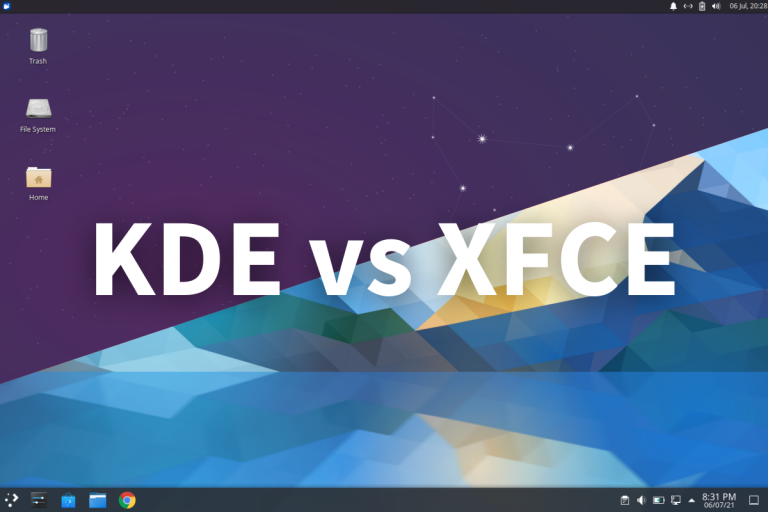In this article, we’ll be comparing the two popular Desktop environments for Linux – XFCE and KDE and help you choose the best desktop environment as per your use case and preference.
KDE and XFCE are popular Linux (and other UNIX-like) desktop environments. KDE Plasma offers a beautiful yet highly customizable interface, whereas XFCE provides a clean, minimalistic, and lightweight desktop for your OS. KDE might be a better option for the users moving to Linux from Windows, and XFCE might be a better option for systems low on resources.
K Desktop Environment (KDE) developed by the KDE team using Qt 5 and KDE Frameworks, whereas XFCE was initially started by Olivier Fourdan and built using GTK toolkit, the same toolkit used by the GNOME desktop environment but, XFCE is not a fork of GNOME.
KDE vs XFCE Linux Desktop Environments
In this section, we compare XFCE and KDE DEs on different benchmarks.
#1: Linux distributions with KDE or XFCE as the default desktop environment
KDE is the default desktop environment out of the box in various Linux distributions such as Kubuntu (which is Ubuntu KDE edition), KDE Neon, Manjaro KDE, Fedora KDE, and many more.
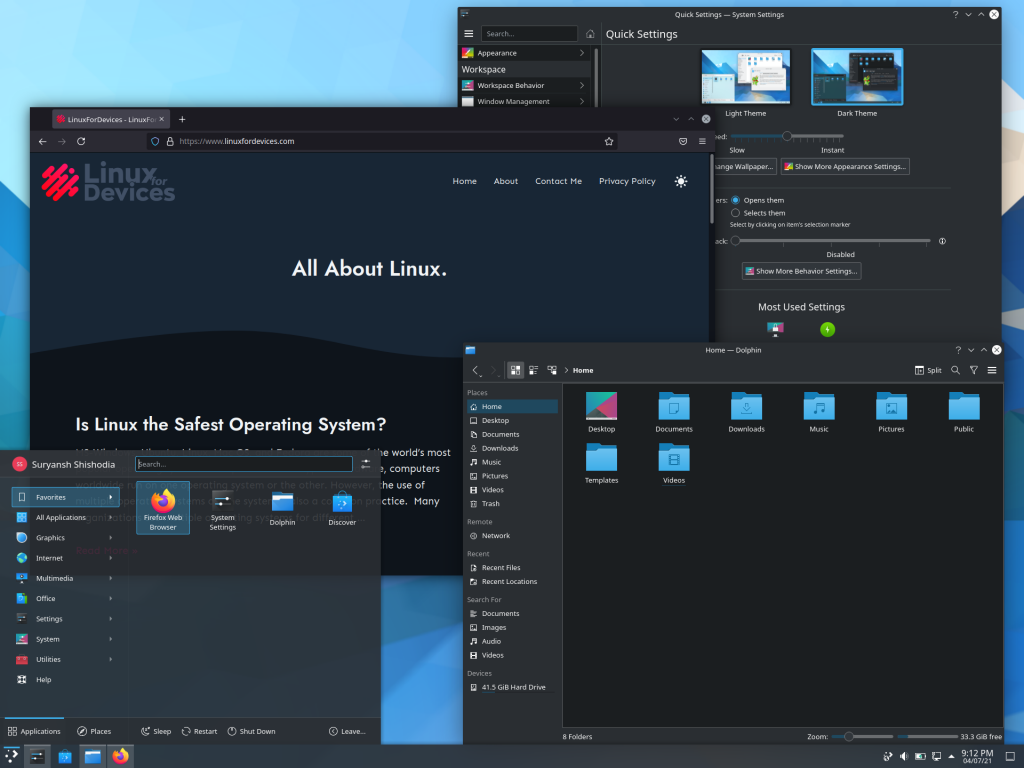
XFCE is too shipped as the default desktop environment for many operating systems such as Xubuntu, LinuxMint XFCE, Manjaro XFCE, MX Linux, and many more.
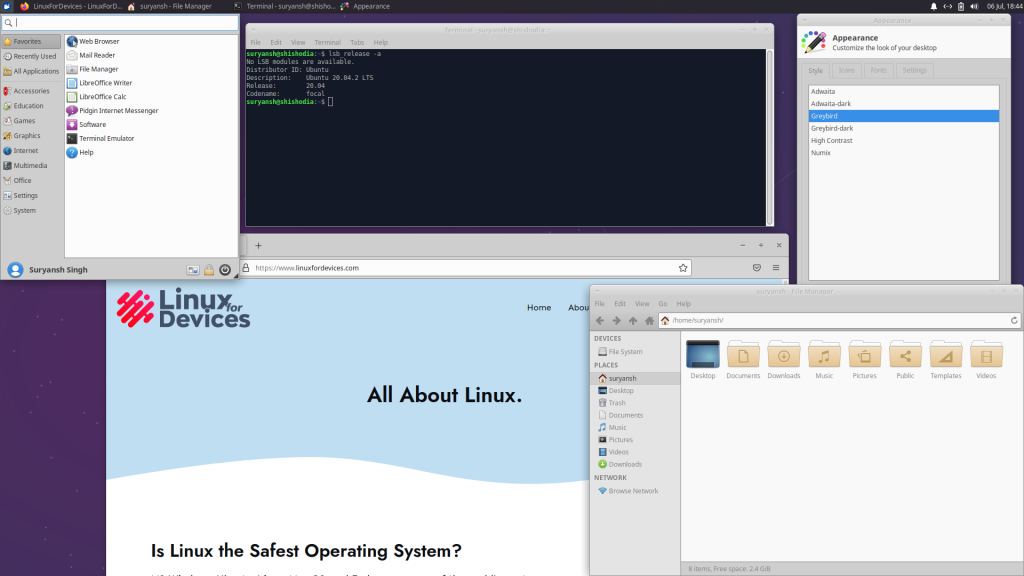
You can also install and use KDE or XFCE alongside any other desktop environment on your Linux distribution. Both, XFCE and KDE are widely available in official repositories of all popular Linux distributions and can be installed easily with the help of the distribution’s default package manager.
#2: Idle Memory Usage KDE vs XFCE
KDE seems to use more memory than XFCE (Xubuntu) desktop environment. KDE is using 580 MB when idling with no applications running beside the terminal application.
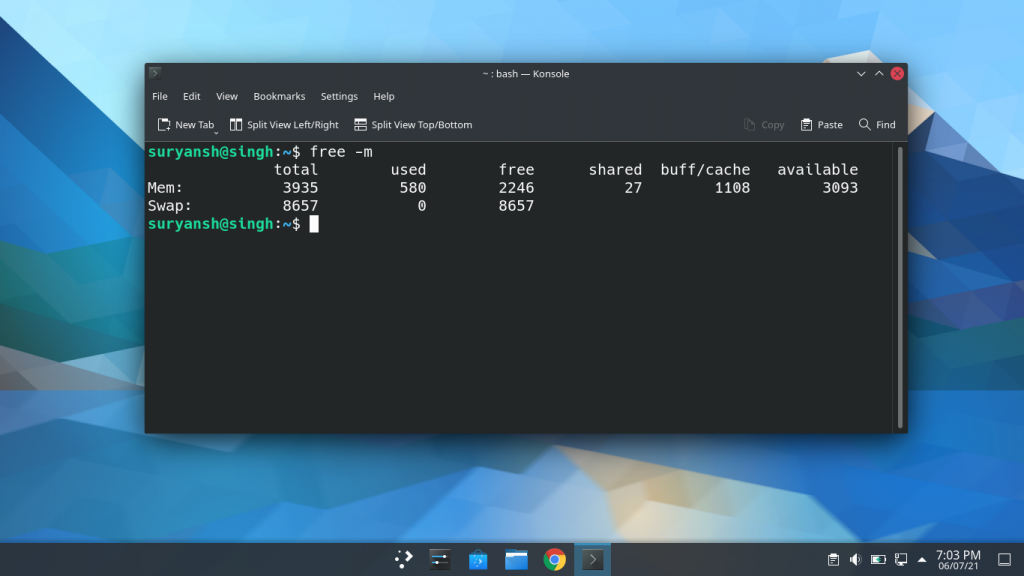
Whereas XFCE is using around 476 MB when idling with no applications running beside the terminal application.
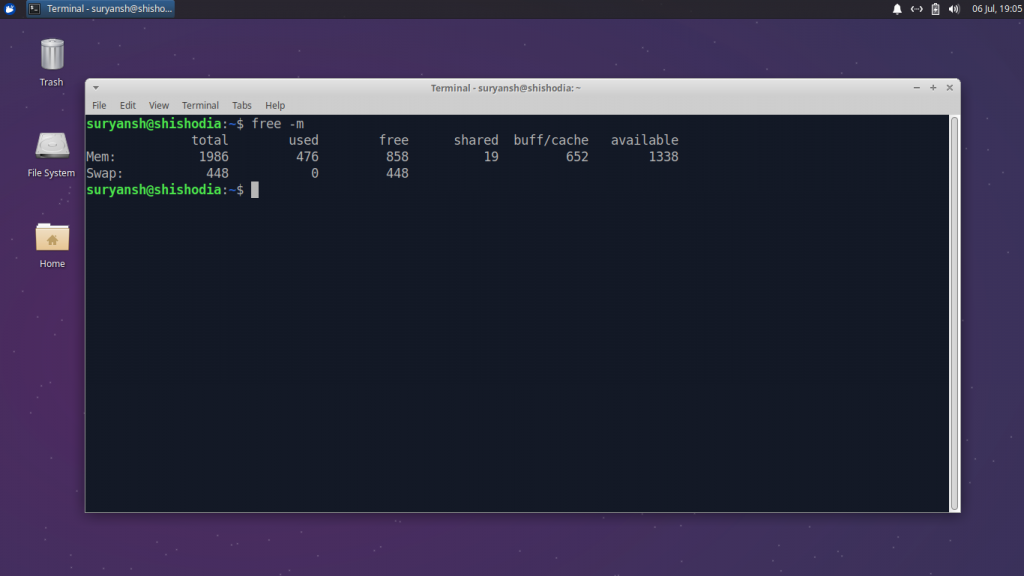
We also tried launching Firefox Web Browser with a single tab, browsing our LinuxForDevices home. The KDE Plasma was using around 920 MB, whereas the XFCE desktop was using around 760 MB. Hence, XFCE is the more lightweight desktop environment when we take a look at the system resource usage.
#3: Stability: XFCE vs KDE
Both KDE and XFCE desktops offer very stable desktop environments. XFCE has existed for over 25 years since its initial release in 1996 and to date being actively developed. KDE has a larger community and its patrons include companies like Canonical, Google, OpenSUSE, etc…
#4: Customizability
In this section, we compare the customizability of the KDE and XFCE.
KDE
KDE Desktop offers a lot more customizable desktop compared to XFCE. Plenty of beautiful themes to choose from, widgets, easy to customize, and it also comes with polished professional tools and applications like Krunner, Dolphin File Manager, and much more.
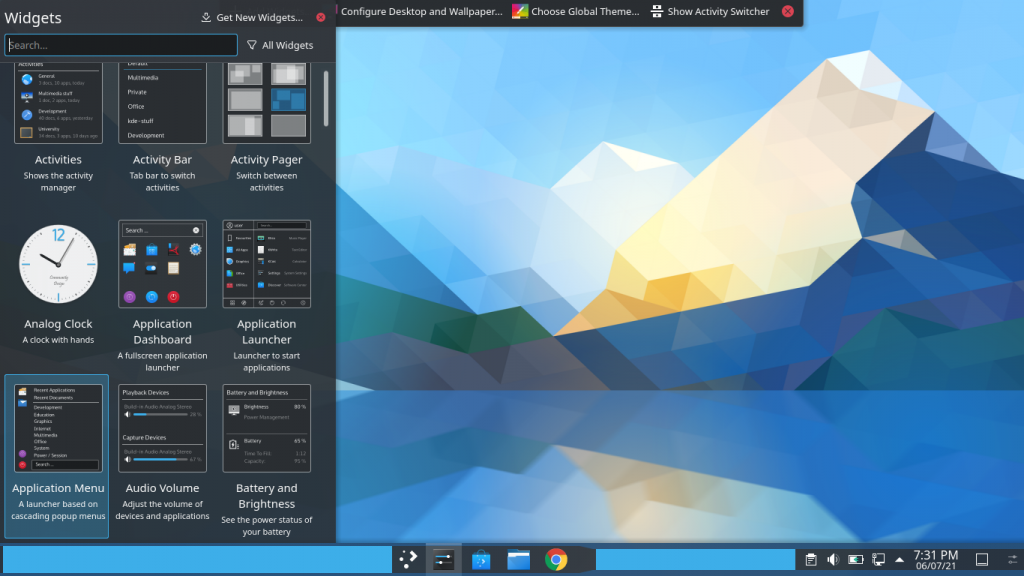
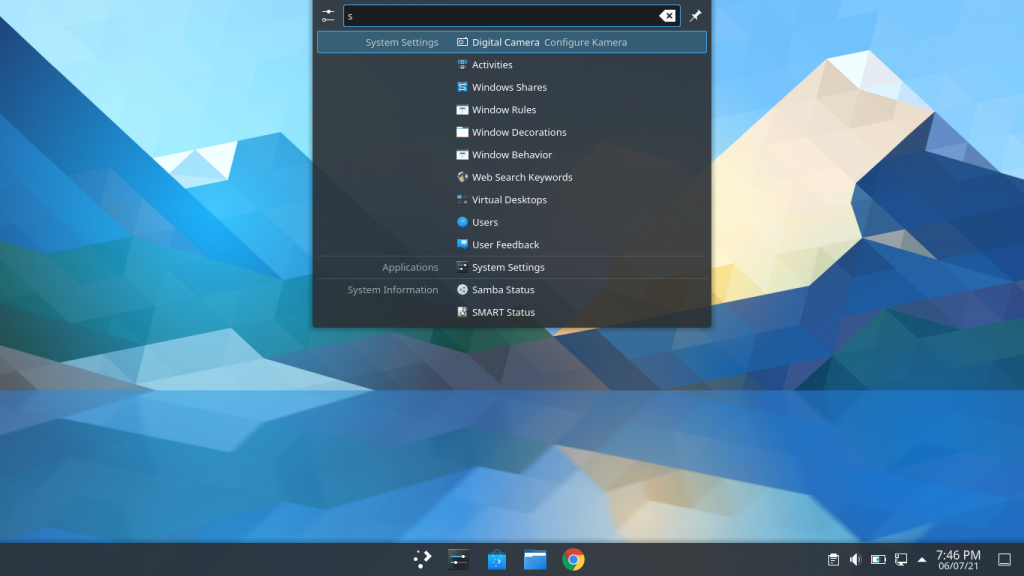
XFCE desktop environment
XFCE is a minimalistic desktop environment, it follows the Unix philosophy of modularity and re-usability. XFCE aims to be fast and low on resources, but with lesser customization options as compared to KDE Plasma Desktop. It is simple yet has plenty of features. Unlike KDE, This DE does not support the modern Wayland display protocol yet.
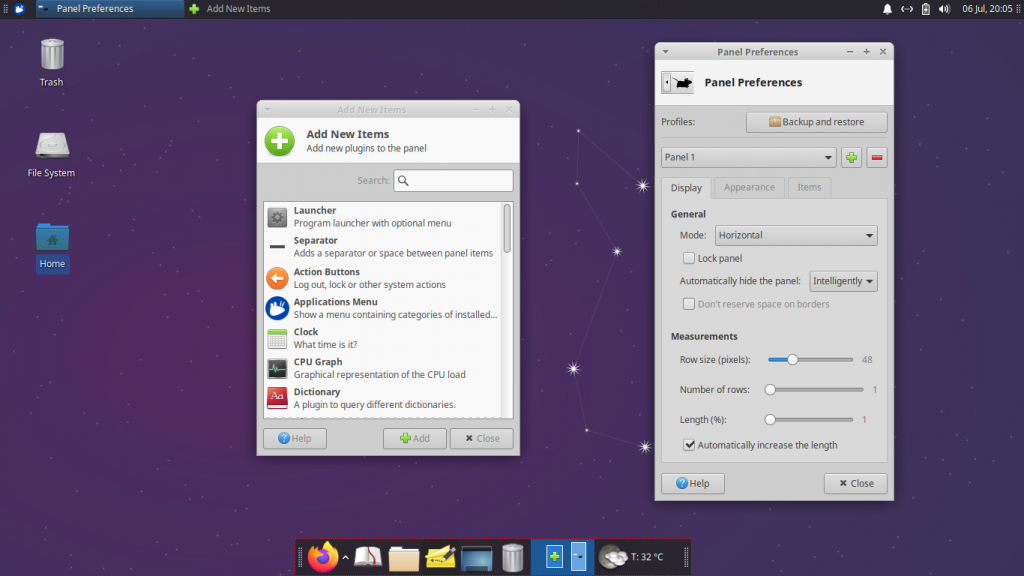
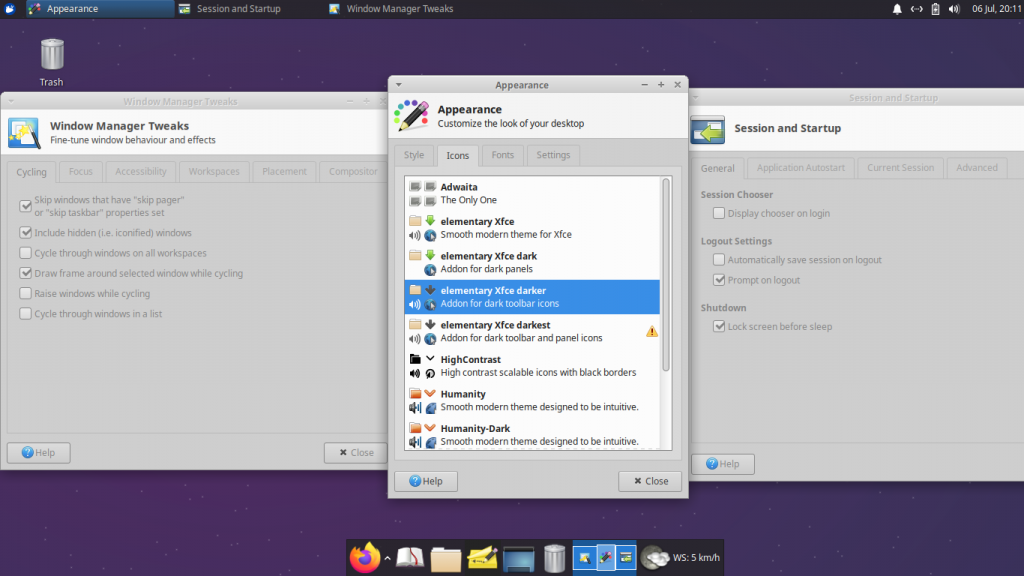
Conclusion
KDE Desktop Environment and XFCE are both great desktop environments. For a more minimalist and lightweight desktop, XFCE might be a better option, but for a beautiful customizable desktop environment, KDE Plasma seems to be a better option. There is no best desktop environment for anyone, because everyone has a different choice and takes on how their desktop should run and feel.
If you want to try out both the Desktop environments, then you should give Linux Mint a try as it provides pre-built ISO file with those two desktop environments. Both of them are extremely user-friendly desktop environments and give you an amazing Desktop User Experience. It all comes down to your system requirements and use-case.
Thank you for reading!
Also, we regularly add exciting stuff to read, so keep checking on us! 😀

